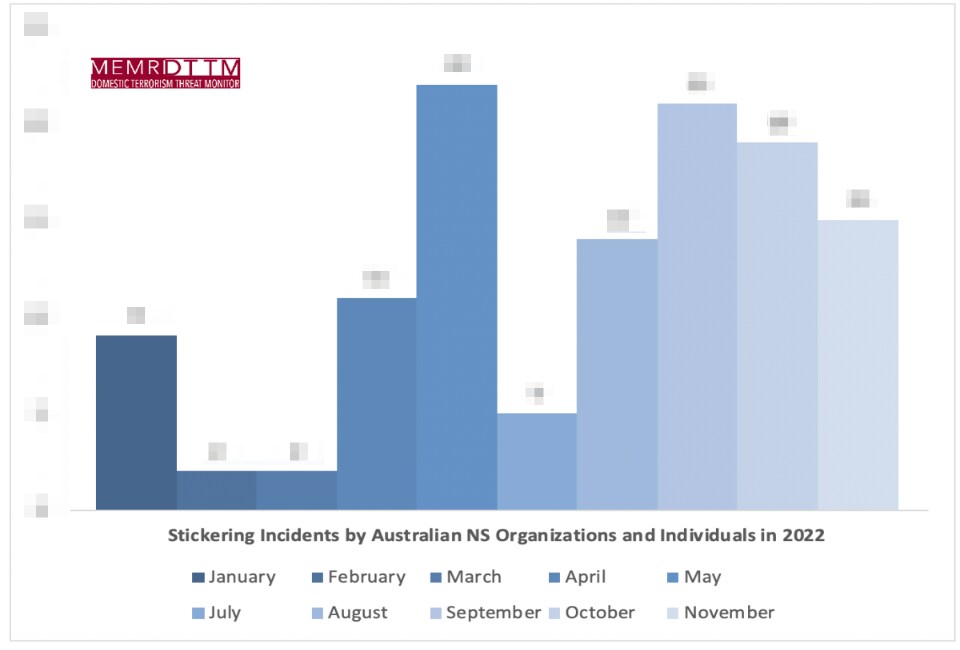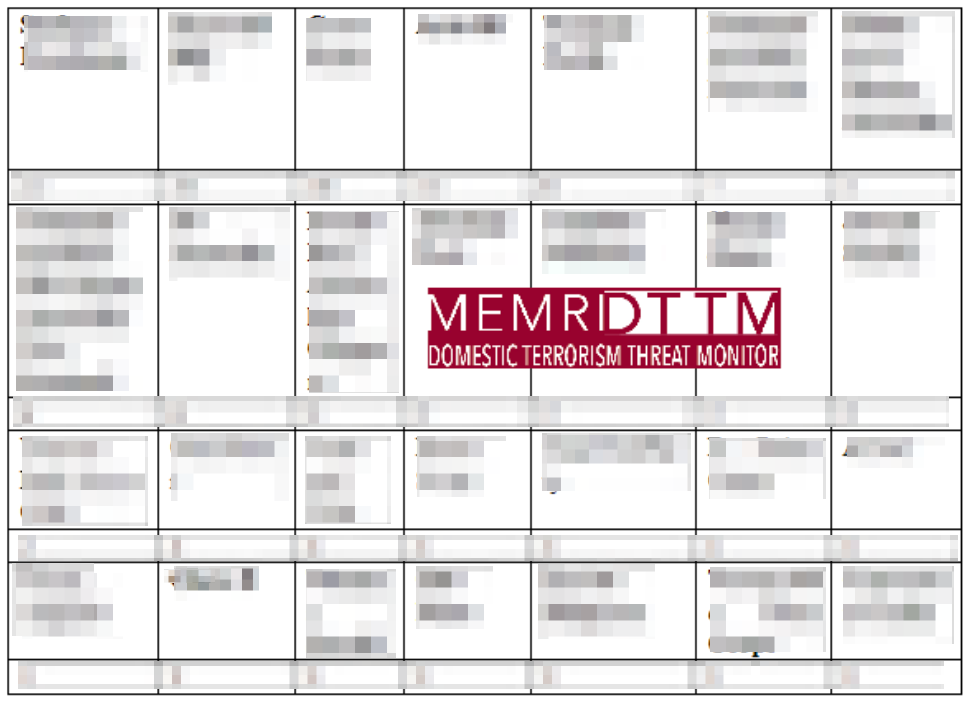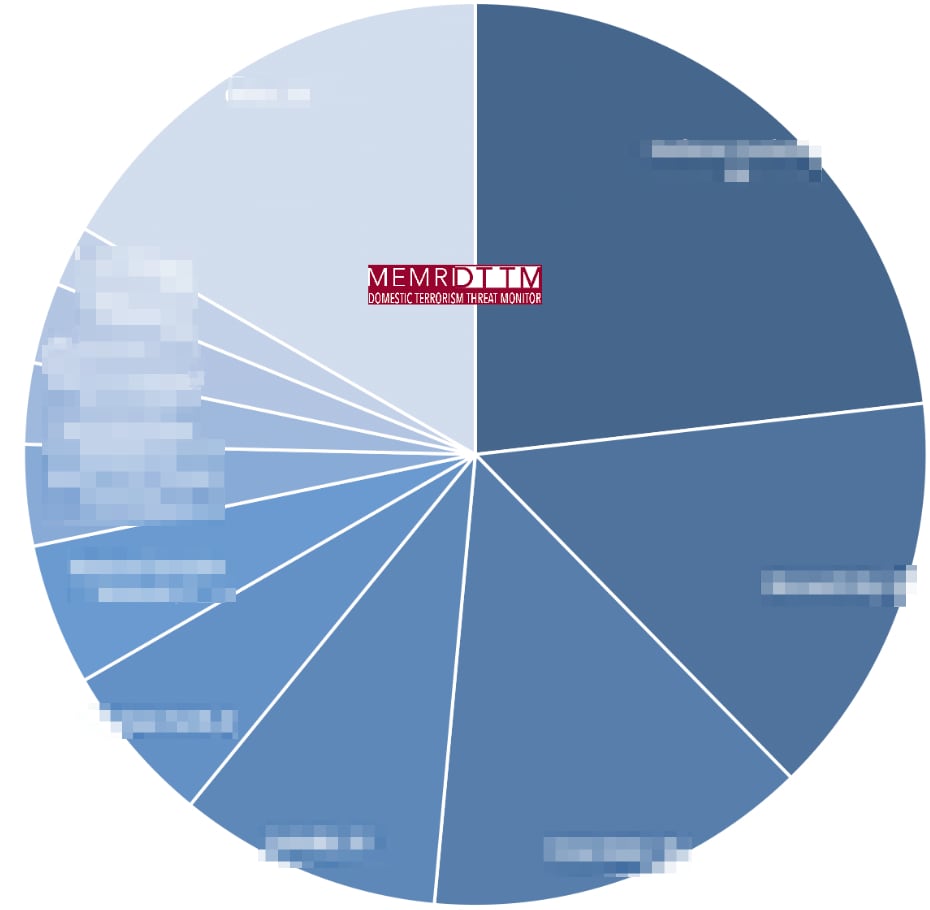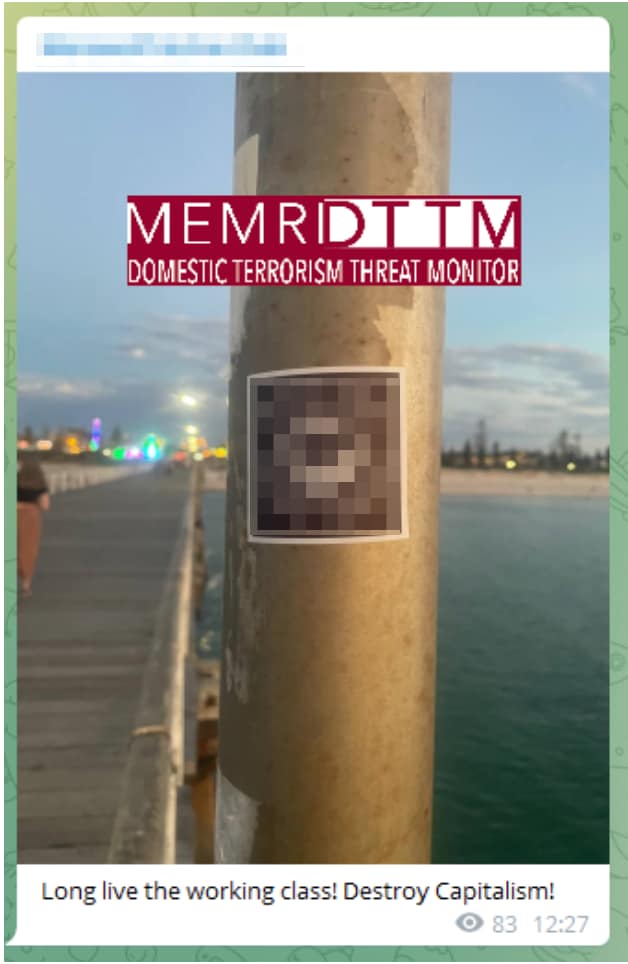Introduction
Throughout 2022, Australian Neo-Nazi organizations and individuals posted many stickers on public property. A number of these groups were highly active, totalling 135 instances of stickers posted and documented online throughout the course of the year. This report has adopted a chronological approach to categorizing and analysing self-reported instances of stickers posted in Australia from January 1, 2022, to December 1, 2022.
This report has identified a significant increase in stickering activity in Australia in mid-to-late 2022, with highs of 22 instances in May and 21 instances in September. This report suggests that there may be two main driving factors that may explain this increase.
First, an Australian Neo-Nazi began in May 2022 to produce, print, market, sell, and distribute a wide variety of stickers including Neo-Nazi, white supremacist, racist, antisemitic, Islamophobic, and anti-LGBTIQA+ designs. This individuals' stickers were identified in instances of stickers posted and documented online by other actors, in addition to himself.
Second, several new Neo-Nazi organizations and groups appeared as the year progressed – resulting in more entities aspiring to gain visibility or recruit members, with some adopting the tactics of established neo-Nazi organizations as a means of doing so. Australian Neo-Nazis predominately posted their stickering activities to their Telegram channels, from when they were shared widely online.
This report reviews instances of Australian Neo-Nazi organizations, groups, and individuals posting stickers in each month from January 1, 2022, to December 1, 2022.
YOU MUST BE SUBSCRIBED TO THE MEMRI DOMESTIC TERRORISM THREAT MONITOR (DTTM) TO READ THE FULL REPORT. GOVERNMENT AND MEDIA CAN REQUEST A COPY BY WRITING TO DTTMSUBS@MEMRI.ORG WITH THE REPORT TITLE IN THE SUBJECT LINE. PLEASE INCLUDE FULL ORGANIZATIONAL DETAILS AND AN OFFICIAL EMAIL ADDRESS IN YOUR REQUEST. NOTE: WE ARE ABLE TO PROVIDE A COPY ONLY TO MEMBERS OF GOVERNMENT, LAW ENFORCEMENT, MEDIA, AND ACADEMIA, AND TO SUBSCRIBERS; IF YOU DO NOT MEET THESE CRITERIA PLEASE DO NOT REQUEST.
Table 1.1
Table 1.1 enumerates the number of instances of stickers posted and documented online by month as per the data used in this report.

Chart 1.1 depicts the data in Table 1.1 to better illustrate the increase in stickering throughout 2022.
Chart 1.1

Table 1.2
Table 1.2 enumerates the total number of instances of stickers posted and documented online, categorized by the Neo-Nazi organizations, groups, or individuals responsible.

Chart 1.2
Chart 1.2 depicts the data from Table 1.2 to illustrate the main Australian Neo-Nazi organizations, groups, or individuals responsible for instances of stickers posted and documented online throughout 2022.

January
Australian Neo-Nazi organizations and individuals began 2022 with multiple instances of stickers posted and documented online. In January, there were nine such postings.
A South Australian neo-Nazi organization posted a message on its Telegram channel on January 10. An accompanying photo shows a sticker on a pole by a beach front.

The full text of this post is available to DTTM subscribers.
If you are a subscriber, log in here to read this report.
For information on the required credentials to access this material, visit the DTTM subscription page




